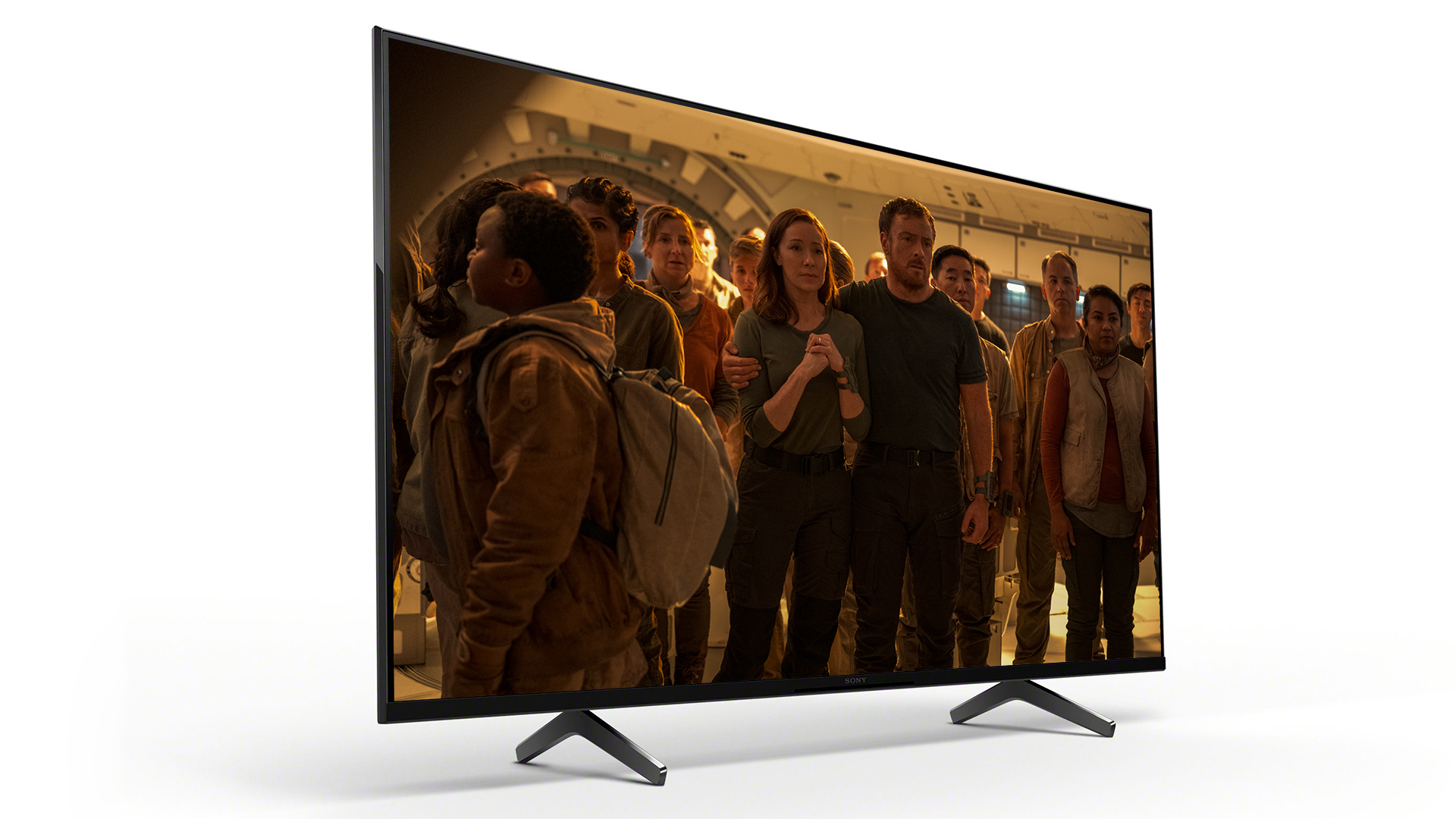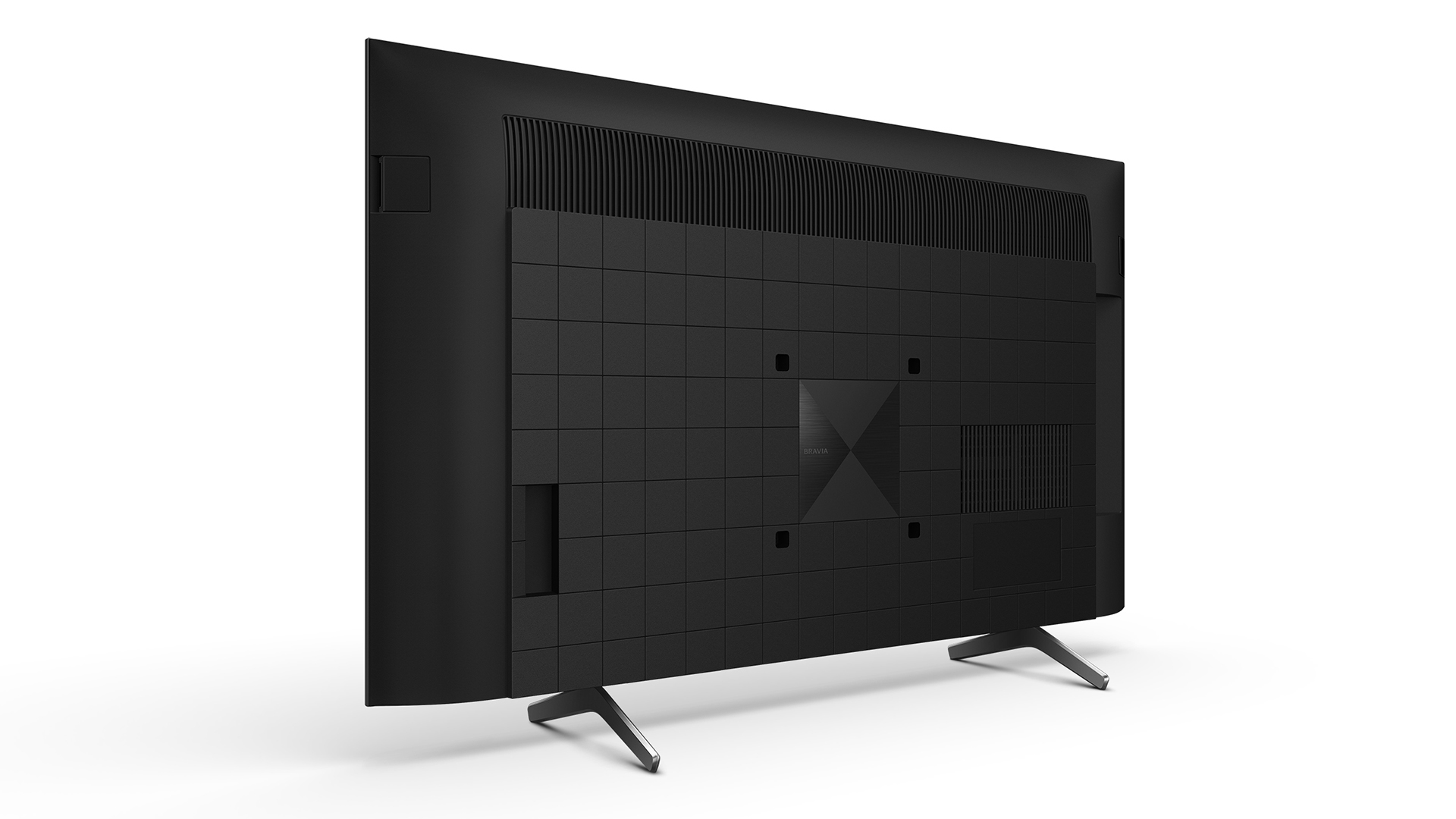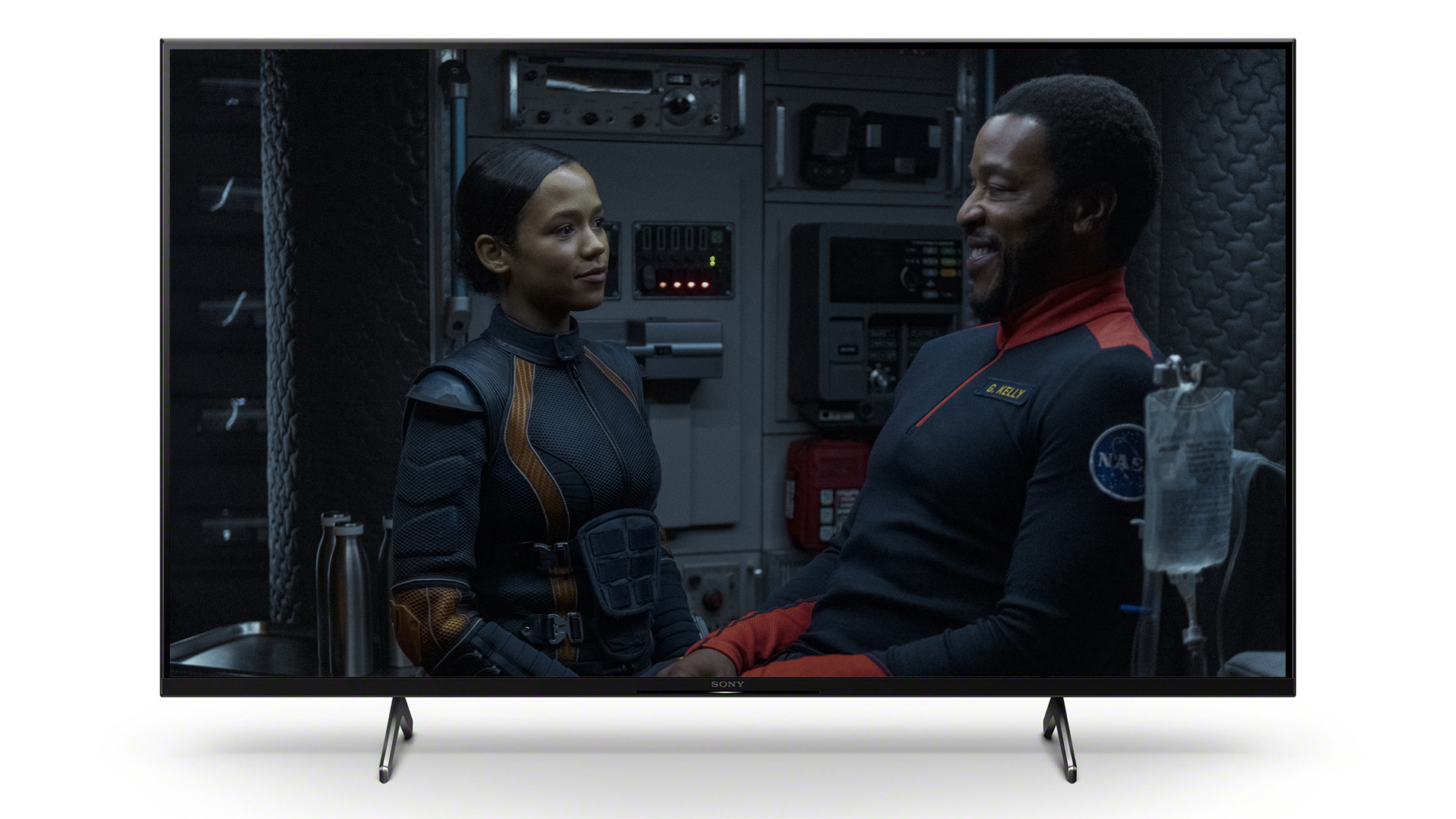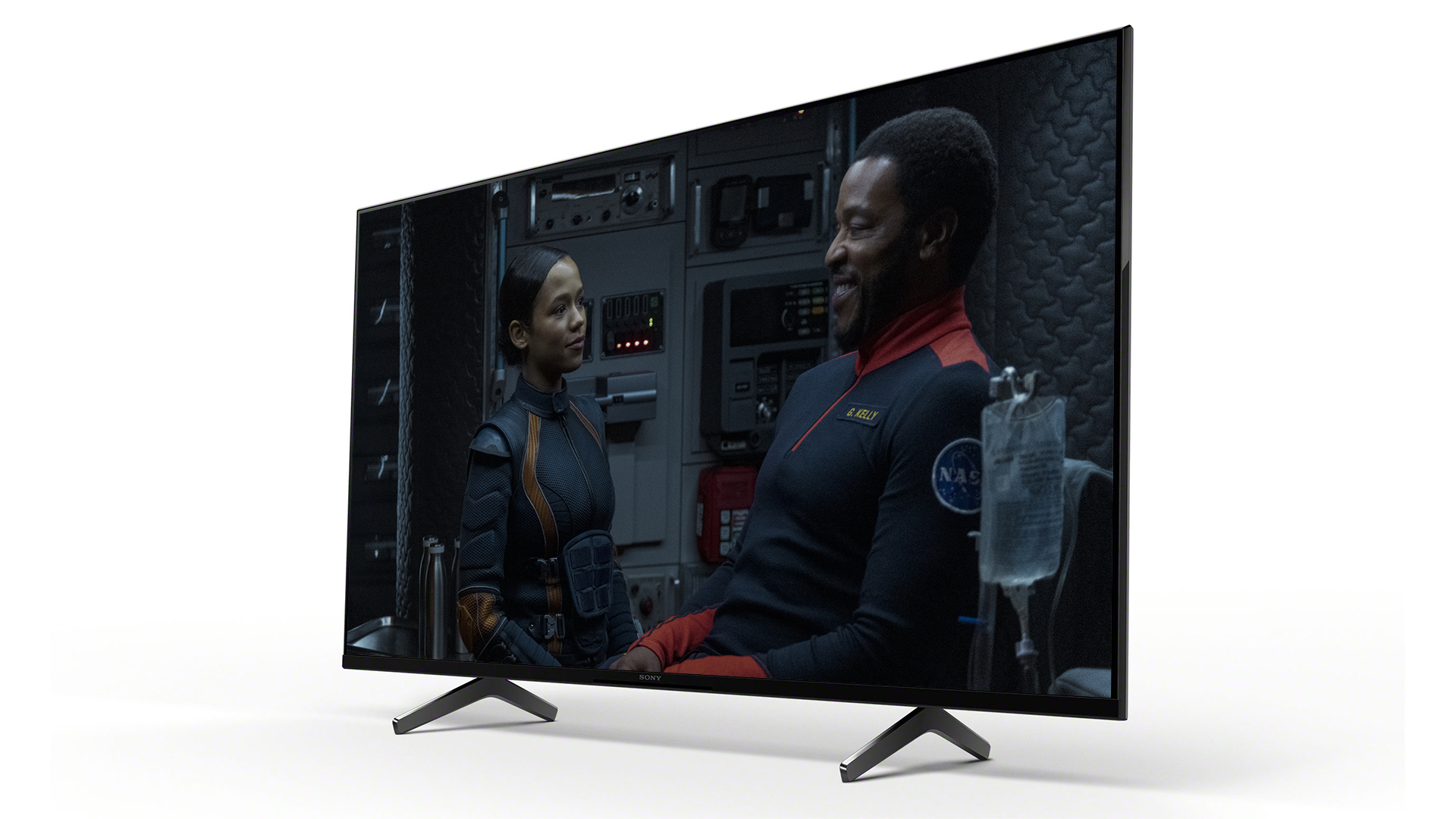What Hi-Fi? Verdict
While there’s a price to pay for it during very dark scenes, the 50-inch X90J’s intense brightness and vibrant colours make it an outstanding mid-range option
Pros
- +
Very punchy HDR
- +
Good value
- +
Sounds impressive for its size
Cons
- -
Blacks could be deeper
- -
Some backlight blooming
- -
Lacking key UK catch up apps
Why you can trust What Hi-Fi?
Sony is unusual in the TV world for selling both OLED and LCD TVs but not necessarily seeing the former as better than the latter. Rather it sees both technologies as having distinct strengths and weaknesses, so that offering both approaches in its range is simply a case of providing options to suit different image tastes and TV usage scenarios.
We mention this because it helps to explain Sony’s thinking with the XBR-50X90J. A mid-range LCD TV with an almost obsessive interest in something that’s typically hard to find on anything other than the most premium TVs: brightness.
Price
There isn’t much else around in the 48-50-inch size bracket at the 50-inch X90J’s £879 / US$900 / AUS$1795 price. It’s too cheap to be challenged by OLEDs – or, at least, OLEDs with the sort of fulsome feature count LCDs at this price boast (LG’s OLED48C1, for instance, costs £1,099) – but it’s also too expensive for most of the myriad ‘volume’ LCD brands to be interested in raising themselves to. Hisense’s surprisingly good R50A7200GTUK Roku TV, for instance, costs just £399. And even Samsung’s most high-end 50-inch non-QLED TV, the 50AU9000, only costs £599.
While not having much direct competition might sound like a good thing for the XR-50X90J, it also creates pressure for it to justify its existence. Does it have enough going on to explain why it costs more than so many rivals, and does it get close enough to more premium models to persuade many relatively well-heeled buyers that £879 / US$900 / AUS$1795 is all they actually need to spend?
Happily, our answer to both these questions is a pretty determined yes.
Design

The Sony XR-50X90J is a mixed bag aesthetically. In the plus column it’s reasonably robust, with more promising heft to it than most LCD TVs we’ve seen this year. Its blade style feet, too, are handily so slim that you can barely see them when you’re watching the screen from straight on.
The screen’s finish looks a bit plasticky, though, and its rear sticks out much further than is fashionable these days. Also, while the feet can disappear when viewed head on, they look a bit basic, for want of a better word, when clocked from even a slight angle.
The latest hi-fi, home cinema and tech news, reviews, buying advice and deals, direct to your inbox.
We’ll be more than prepared to cut the XR-50X90J slack for its hit and miss design, though, if it delivers the goods on its screen. Especially when it comes to that chunky back end, given that this may be a result of Sony’s promising decision to light its mid-range model with a direct LED array, where the LEDs sit directly behind the screen rather than around its edges.
Features

The XR-50X90J boasts a decent set of features for its money. Starting with Sony’s Cognitive Processor XR, which focuses on trying to make images appear more as your eye perceives the real world. It achieves this by (as simply as we can put it!) identifying the type of image being received before breaking it down into its different components and then subtly manipulating local colour, sharpness and contrast to deliver more ‘real world’ results.
The XR-50X90J is built on an LCD panel, with direct LED lighting and local dimming. While this combination typically delivers superior picture quality, the dimming system only appears to comprise 24 separately controlled dimming zones. This is some come down from the 400-plus dimming zones found in Samsung’s mini LED-toting QE50QN90A (a full review of which we'll be publishing in the coming days). But the Sony set is significantly cheaper, and we’ve seen in previous Sony generations just how much quality Sony’s processing can get from even such a limited dimming zone count.
This Sony gets a wide colour gamut panel to go with what experience of previous equivalent Sonys suggests will be unusually high levels of brightness for a mid-range LCD TV. This may well all play a part in the XR-50X90J having received IMAX Enhanced certification, revealing that its pictures have been deemed capable by IMAX of unlocking the picture quality potential of content mastered using its proprietary technology.
The XR-50X90J adds Dolby Vision HDR support, too, alongside the more typical HDR10 and HLG HDR formats. Though as ever with Sony, there’s no support for the Dolby Vision-rivalling HDR10+ system, but that’s no great loss.
Sony’s enthusiasm for Dolby extends to the XR-50X90J’s audio as well, in the shape of both built-in Dolby Atmos decoding and the ability to output full, uncompressed Dolby Atmos to compatible soundbars and AVRs via HDMI eARC.

Processing Cognitive Processor 4K
Screen size 50-inch
Native resolution 3840x2160
Input lag in game mode 17.3ms
Panel type VA with direct lighting and 24-zone local dimming
The eARC support is not the only advanced HDMI feature the XR-50X90J offers, either. It’s supported 4K at 120Hz on two of its HDMI ports for a while, but it can now additionally handle automatic game mode switching with the PS5. At the time of writing, though, our XR-50X90J sample still doesn’t register any support for variable refresh rates from an Xbox Series X, despite that feature having been promised for ages. Confusingly you also have to manually choose in the TV’s input menus (not the Xbox’s menus) between either 4K at 120Hz with no Dolby Vision support when gaming, or 4K at 60Hz with Dolby Vision enabled.
Note, too, that while two of the XR-50X90J’s HDMIs support HDMI 2.1 features, one is also the eARC port, so if you need to use that for your sound, you’ve actually only got one 4K/120Hz HDMI port left.
Input lag, meanwhile, measures 17.2ms in the XR-50X90J’s Game preset. This is a little higher than the circa 10ms numbers being achieved this year by some rival TVs, but should still be low enough not to hand a significant advantage to your enemies.
The XR-50X90J’s smart features, finally, are built on Google TV. This is the latest, much improved evolution of the Android TV platform – and while it’s still not for us anywhere near the easiest smart system to use, it’s substantially more helpful and attractive than any other Android TV generation.
While it carries many of the most popular video streaming services, though, Sony has fallen foul of a similar issue to that faced by LG’s 2020 TVs whereby it doesn’t carry either the Freeview Play or YouView apps. Which means it doesn’t currently carry the catch-up apps for many of the UK’s biggest terrestrial broadcasters. So there’s no BBC iPlayer, no ITV Hub, and no All 4. Sony continues to promise that it will add standalone apps for the key missing catch up services. But it’s been saying that for months, and all we can say is that they haven’t turned up yet.
Picture

The X90J’s pictures aren’t exactly shy and retiring – and that’s fine by us. Exceptional amounts of brightness make it onto the screen with startling consistency, delivering some of the most flat-out punchy and bright HDR pictures we’ve ever seen on a 50-inch TV.
It’s not just brightness for brightness sake, either. Sony is unashamedly using it to deliver as uncompromising an HDR experience as it can within its backlight limitations. So daylight HDR scenes look more natural and realistically bright by far than they do on any other current TV in its size and class.
Even more impressively, the XR-50X90J has enough headroom with its brightness to ensure that the brightest highlights of already bright HDR images enjoy that extra step up in intensity that usually only the most premium TVs provide.
As a simple example of what we’re talking about here, as The Loser’s Club gather outside Pennywise’s house for the first time in It, even though the sun-drenched shot already looks extremely bright and vibrant, the XR-50X90J still manages to find an extra brightness gear to capture a sense of the sun bouncing off the trampled-down long grass that’s pretty much completely missed by most mid-range and budget TVs. In fact, the XR-50X90J actually looks punchier and overall more satisfying with bright shots like this than even the outstanding, mini-LED-driven Samsung UE50QN90A.
The XR-50X90J extends its love of brightness to SDR content with some of its picture presets, too, thanks to the best SDR to HDR conversion system the TV world has given us to date.
The Sony’s picture charms aren’t limited to brightness, thankfully. For instance, it has the colour range to keep up with its high brightness, ensuring that you get beautifully rich, bold saturations that don’t look bleached even during the brightest HDR scenes.
The Cognitive XR processor ensures there’s always plenty of tonal subtlety to go with the full-on saturations too, helping bright scenes achieve an almost three-dimensional look wholly consistent with the new processor’s ambition of making pictures look more in line with how your eyes interpret the real world.

The XR-50X90J isn’t quite as sharp and detailed with native 4K images as the more expensive Samsung UE50QN90A. It still gives a good 4K account of itself in the context of the mid-range 50-inch LCD TV world generally, though, and arguably its slightly less forensic approach to sharpness can sometimes, at least, feel a little more cinematic.
The XR-50X90J’s upscaling of sub-4K sources isn’t as ahead of the pack as previous Sony TV generations have been. Especially when it comes to handling the colour and compression noise a sub-4K source may contain. This says more, though, about the AI-inspired improvements one or two rival brands have made to their upscaling engines than it does about any slide in quality on Sony’s part. Again, too, some might argue that Sony’s slightly milder approach to 4K upscaling sometimes yields more immersive and natural results.
The TV also benefits from Sony’s customary prowess when it comes to handling judder and motion blur. Action scenes and camera pans appear without suffering unnatural levels of stuttering or distracting processing side effects. Nor does it leave 24p films looking like soap operas.
If you happen to be well versed in the way LCD TV backlights work, you might be wondering at this point if there’s a price to pay for the XR-50X90J’s extreme brightness given that it only supports 24 local dimming zones. The simple answer is that there is – but it’s not so high that it needs to be seen as a deal breaker.
The thing is, while the XR-50X90J’s black levels aren’t bad by LCD standards with very dark scenes, and while dark scenes also contain plenty of shadow detailing, things can become tricky with both mid-dark scenes, or where there’s a bright object or two against a mostly dark backdrop. In both cases black levels become noticeably elevated, which additionally causes some dark colour tones to flatten. At least by the vibrant standards of the TV’s colours generally.
There can also be some evidence of backlight blooming around stand-out bright objects that can extend a good few inches beyond the edges of the bright object – as might be expected on a TV with only 24 dimming zones. This, clearly, can be a bit distracting when it happens. It doesn’t help, either, that the blooming can stray into the black bars above and below wide aspect ratio films, where it becomes more noticeable. Samsung’s mini LED TVs, by comparison, manage to more or less ‘lock off’ the backlighting in black bar areas so that they remain inkily, undistractingly black at all times.
However (and this is a pretty big one by however standards), unlike rival locally dimmed LCD TVs that exhibit less backlight blooming, the XR-50X90J doesn’t compromise the brightness of stand-out bright objects at all. So street lights, the moon against a night sky and so on retain the same sort of light intensity that the XR-50X90J gleefully serves up with bright HDR content, rather than looking markedly dimmer as they would on LCD TVs more concerned with avoiding backlight bloom than maintaining brightness consistency.
This makes the XR-50X90J’s pictures feel stable and constant – especially as, unexpectedly, we actually find the set’s management of its mere 24 dimming zones results in less overt and therefore distracting blooming issues than you get with Sony’s step up X95J range (which we’ll be reviewing very soon).
The XR-50X90J’s ‘brightness first’ approach also makes it a great option for people with typically relatively bright room conditions, where the consistent brightness will shine through while the backlight ‘gremlins’ will more often than not be hidden from view.
We should add finally that the XR-50X90J’s aggressively bright approach to HDR can result in a little detail and subtle shading getting ‘clipped’ out of peak light areas of HDR images, while viewing angles are rather limited. But the former of these issues seems a fair price to pay for so much HDR punch, while the latter is fairly typical of LCD TVs.
Sound

The XR-50X90J’s Acoustic Multi-Audio speaker system joins its pictures in delivering a more aggressive experience than we’re used to experiencing with a 50-inch TV.
This is especially true when it comes to the sort of density and expansion of sound associated with Dolby Atmos movie mixes. As we approach the massive crescendo at the end of the garage projection scene in It, for instance, unlike the vast majority of its rivals its sound doesn’t reach a point where it suddenly flattens off or, worse, withdraws into itself. It keeps going, finding whatever extra dynamic range gears it needs to in order to keep up with the ever-expanding sound.
The size of the XR-50X90J’s soundstage is impressive too, delivering width and even a little height beyond the physical boundaries of its screen. As you’d hope, this is at its most effective with Dolby Atmos mixes. But it helps any sort of mix sound detailed, lively and crystal clear.
The one audio area where the XR-50X90J comes up a bit short is bass. Despite the impressive headroom it reveals when the going gets dense, it typically sounds a little thin and bright. Enough on occasion to make some relatively high pitched sounds and vocals hit your ear a bit harshly.
Verdict
It would be nice if Sony finally got around to delivering a few long-promised smart TV and gaming features to the XR-50X90J. Also, if you’re a die-hard movie fan who habitually watches TV in a blacked out room, the Sony XR-50X90J’s backlight limitations might be a problem.
For most folk and households, though, the XR-50X90J’s triumphant love of brightness, colour and clarity could well make it the best £879 / US$900 / AUS$1,795 they’ve ever spent.
SCORES
- Picture 5
- Sound 4
- Features 4
MORE:
Read our review of the Samsung UE50AU9000
Also consider the TCL 55RP620K
These are the best 50-inch TVs for all budgets
What Hi-Fi?, founded in 1976, is the world's leading independent guide to buying and owning hi-fi and home entertainment products. Our comprehensive tests help you buy the very best for your money, with our advice sections giving you step-by-step information on how to get even more from your music and movies. Everything is tested by our dedicated team of in-house reviewers in our custom-built test rooms in London, Reading and Bath. Our coveted five-star rating and Awards are recognised all over the world as the ultimate seal of approval, so you can buy with absolute confidence.

